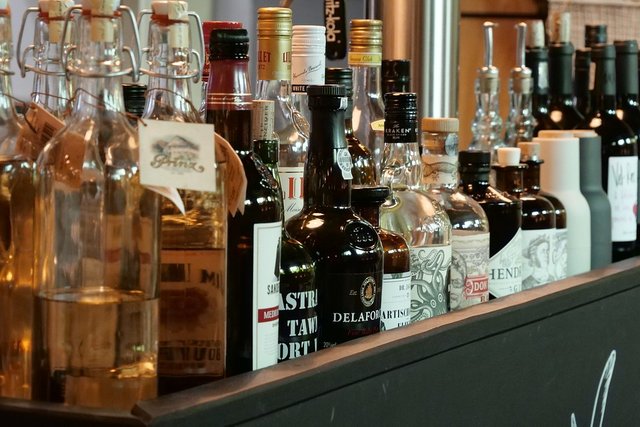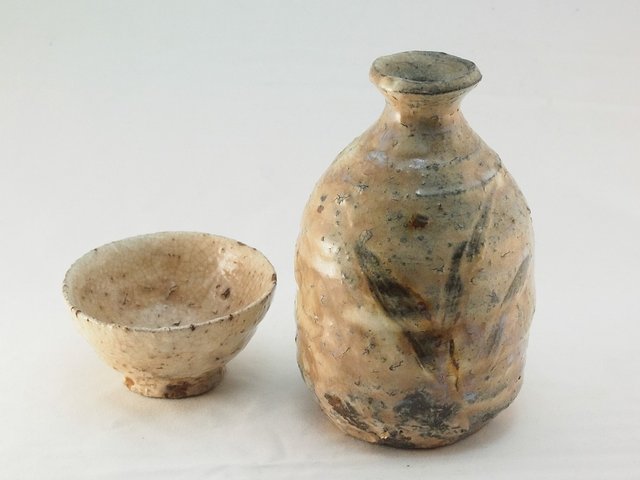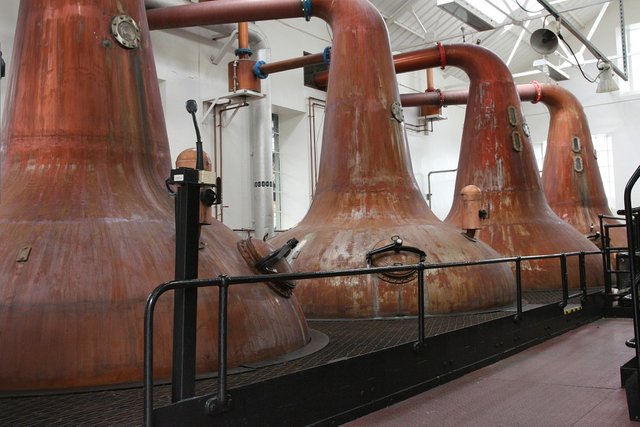No doubt some basic substances resulting from chemical / biological processes that have accompanied us for good or for evil throughout the history of mankind. Today we will talk a little about alcoholic drinks.
Alcoholic beverages are all those that have ethanol or ethyl alcohol, whether produced by the alcoholic fermentation process such as wine, cider, beer and sake where microorganisms process carbohydrates to transform them into ethanol or by distillation such as whiskey, the rum, the vodka and the brandy. What varies between one process and another is that beverages produced by fermencacipon simply have a lower percentage of alcohol than those that are distilled, this measure is expressed in grades ranging from 1-100 °.
These were found even in the Stone Age, between 10000-5000 BC. In the Neolithic period, analyzing ancient vases from the village of Jiahu in Henan province in northern China, residues of alcoholic beverages made from grapes, honey and rice beer were found. However the wine distillation process was first described by the Arab chemist Al-Kindi in the 9th century, but it was not until the 12th century that this process came to Italy and India in the 14th century where it was widely used in the Sultanate Delhi, in this same century alcoholic drinks spread throughout the European continent.
Distillation consists of a process carried out after the alcoholic fermentation of a cereal such as barley or corn, a fruit or a tuber. In this the fermented one takes and warms up so that the ethanol evaporates and later it is cooled in tubes so that it returns to its liquid state, separating it this way from the other components of the fermented one and obtaining a much more concentrated drink. The best known are whiskey, based on cereals with a degree of 40 ° from Scotland, vodka based on potato starch with 40 ° and commonly associated with Russia and agave tequila with 60 ° and originating in Mexico.
Ethanol being a legal depressant drug is widely used throughout the world and can generate addiction (alcoholism) and if consumed in excess can cause poisoning, commonly called drunkenness. Its symptoms tend to affect cognitive abilities, disinhibition and depending on the dose can cause ethyl coma, loss of consciousness or in the worst cases respiratory paralysis and death. However, the average lethal dose is 10300 mg / kg, but it is still less toxic compared to other long-chain alcohols such as methanol (wood alcohol), which ironically can be treated with ethanol.
That's it for now, see you in the next post. Regards!
Sin duda unas sustancias básicas resultantes de procesos químicos/biológicos que nos han acompañado para bien o para mal a lo largo de la historia de la humanidad. Hoy hablaremos un poco de bebidas alcoholicas.
Las bebidas alcohólicas son todas aquellas que tienen etanol o alcohol etílico, ya sean producidas por el proceso de fermentación alcoholica como el vino, la sidra, la cerveza y el sake donde microorganismos procesan los glúcidos para transformarlos en etanol o por destilación como el whisky, el ron, el vodka y el brandy. Lo que varía entre un proceso y otro es que las bebidas producidas por fermencacipon simplemente tienen menor porcentaje de alcohol que las que son destiladas, esta medida se expresa en grados que van del 1-100°.
Estas se encontraron incluso en la Era de Piedra, entre 10000-5000 a.C. En el periodo Neolítico al analizar jarrones antiguos de la villa de Jiahu en las provincia Henan al norte de China se encontraron residuos de bebidas alcohólicas hechas de uvas, miel y cerveza de arroz. Sin embargo el proceso de destilación del vino fue descrito por primera vez por el químico arabe Al-Kindi en el siglo IX, pero no fue hasta el siglo XII que este proceso llegó a Italia y a India en el siglo XIV donde fue ampliamente usada en el Sultanato Delhi, en este mismo siglo las bebidas alcoholicas se extendieron por todo el continente europeo.
La destilación consiste en un proceso realizado después de la fermentación alcoholica de un cereal como la cebada o el maíz, una fruta o un tubérculo. En este se toma el fermentado y se calienta para que el etanol se evapore y posteriormente se enfría en tubos para que vuelva a su estado liquido, separandolo así de los otros componentes del fermentado y obteniendo una bebida mucha más concentrada. Las más conocidas son el whisky, a base de cereales con un grado de 40° proveniente de escocia, el vodka a base de almidon de papa con 40° y comunmente asociado con Rusia y el tequila del agave con 60° y originario de México.
El etanol al ser una droga depresiva legal es muy utilizada en todo el mundo y puede generar adicción (alcoholismo) y en caso de consumirlo en exceso puede causar intoxicación, comunmente llamada embriaguez. Sus sintomas suelen afectar las habilidades cognitivas, deshinibición y según la dosis puede causar coma etílico, pérdida del conocimiento o en el peor de los casos parálisis respiratoria y muerte. Sin embargo la dosis media letal es de 10300 mg/kg, pero sigue siendo menos tóxico en comparación con otros alcoholes de cadena larga como el metanol (alcohol de madera), el cual irónicamente puede ser tratado con etanol.
Eso es todo por ahora, nos vemos en el siguiente post. Saludos!





Congratulations! This post has been upvoted from the communal account, @minnowsupport, by omg-is-biology from the Minnow Support Project. It's a witness project run by aggroed, ausbitbank, teamsteem, theprophet0, someguy123, neoxian, followbtcnews, and netuoso. The goal is to help Steemit grow by supporting Minnows. Please find us at the Peace, Abundance, and Liberty Network (PALnet) Discord Channel. It's a completely public and open space to all members of the Steemit community who voluntarily choose to be there.
If you would like to delegate to the Minnow Support Project you can do so by clicking on the following links: 50SP, 100SP, 250SP, 500SP, 1000SP, 5000SP.
Be sure to leave at least 50SP undelegated on your account.
Downvoting a post can decrease pending rewards and make it less visible. Common reasons:
Submit
It's not possible to achieve 100% by destination ;)
https://en.wikipedia.org/wiki/Azeotrope_tables
Downvoting a post can decrease pending rewards and make it less visible. Common reasons:
Submit
I know, I would refer to the scale on which the degree of alcohol (ABV) is measured. Ethanol in particular can reach 95 ° with a normal distillation and even 97 ° depending on the pressure. That's what I've read but thank you very much for the observation and comment :D
Downvoting a post can decrease pending rewards and make it less visible. Common reasons:
Submit